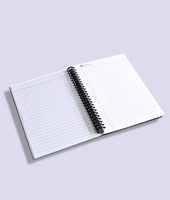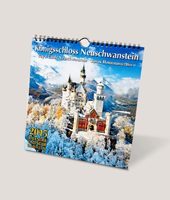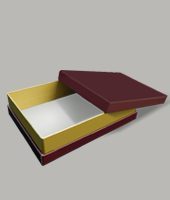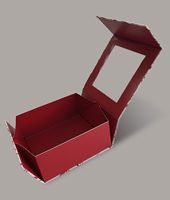It’s a long-standing truth in marketing that the power of storytelling should never be underestimated. This principle holds just as true in the printing industry. Even though we take pride in our work, technical details such as producing something on a B1 press with 8 werks, 4+4 colors, might not resonate with an audience unfamiliar with industry jargon. Instead, the story behind the creation of a packaging material—or in this case, a bookazine—can be far more engaging.
Fortunately, Válasz Online Publishing Ltd. and Szabolcs Vörös, the author-editor of 1000 Days – The War of East and West, were exceptional partners in this endeavor. On 5th December, Keskeny Printing House had the privilege of participating in the book launch. The publication – a project, that entered production just two weeks before the event – provides a compelling glimpse into the realities of war. Ahead of the launch, we had the opportunity to speak with Szabolcs Vörös, an experienced foreign policy journalist, about the publication, his time in Ukraine, and the challenges of his profession.

In several cycles, you spent more than 100 days in Ukraine since the outbreak of the war. Why did you decide to go to the front? How do you recall the organization of the first trip and the public mood at that time?
I’ve been travelling to Ukraine since 2014, albeit not with the current intensity. Over time, I built a basic network of contacts that became invaluable in February 2022. With that foundation, I felt it was my duty to act. Fortunately, the environment at Válasz has been supportive of this decision from the start. When planning the first trip, all I knew was that I needed to get to the border. I chose the Slovak-Ukrainian border, where many refugees were crossing, as I wanted to speak with them and document their experiences. Additionally, I had previously reported on a border village in the area and was able to contact the local priest, who was leading relief efforts. This gave me immediate access to places that might have otherwise been difficult to enter. From there, the journey progressed—Kiev and the front line came later.
How do we imagine life near the front line versus areas farther away? How well do public services work?
Far from the front line, life feels largely normal, apart from a few visible reminders of war. In Kiev, for instance, you wouldn’t notice a war unless there’s an air raid or a recently erected monument. But as you approach the front, the atmosphere changes drastically. Even 40-50 kilometers away, the sound of war becomes unmistakable. Closer to the front line, desolation sets in: bombed-out villages, abandoned homes, and a pervasive sense of despair. The devastation is a stark and haunting experience.
What motivated you to write this book, and how did you compile nearly 200 pages of material? What message did you aim to convey?
I wanted to combat the growing indifference in Hungarian society toward the war. I wanted to shake up the readers: this war is taking place here, in a neighbouring country. If we were to get in the car now, after a day’s journey we would be in the zone where the fighting is taking place. I wanted to make people aware of how close this war is and how it is affecting us. To my surprise, much of the material came from my 107 days spent in Ukraine. I had written those articles with an eye toward preserving the reality of life during war. The book’s preface, titled Memoir Against Indifference, encapsulates my goal: to shake readers from apathy and remind them of the ongoing tragedy nearby. Also a bestof material, with contributions from eminent outside authors.

How did you choose which external authors to involve in the writing of the book?
I have been a foreign policy journalist for 15 years and have been covering Ukraine for 11 years. These 11 years were plenty of time to easily invite experts who I consider credible and competent on this issue. And for them, the assurance that I was editing this publication was a guarantee that they would not put their names to something that might later compromise them.
Was there a person or story, or even an experience, that particularly touched you but did not make it into the book?
I can’t think of any, they really are the hardest material. It is also strange to use the term bestof in this context. After all, these are articles about war, written in horrible circumstances, but they are the ones that resonated with me. These are the ones I tried to write about in a really sensitive way. I don’t have any sense of missing anything.

As a journalist, how do you separate your emotional response from your professional obligations? Can you?
It’s not easy. There’s always a fine line between reporting and becoming emotionally involved. I strive to maintain balance, ensuring my reporting doesn’t cross into activism, even though my words often reflect where my sympathies lie. But ultimately, journalism requires that level of detachment.
How did you envision the book’s design in the planning phase?
To be honest, I never imagined it could look this good. Seeing the final PDF was thrilling, but holding the finished book was incomparable—it felt like holding my own child. I hope readers feel the same, despite the heavy subject matter.
One of the most spectacular printing solutions for 1000 Days – The War of East and West is the laser-cut, bullet-dotted book cover. One of the major advantages of laser die-cutting is, that it is a technology perfect for cutting out very fine patterns and details, and it can be used in cases where it is difficult or impossible to achieve a graphic element using traditional die-cutting. It is also a versatile and cost-effective process. Not only can it be used on a variety of substrates, but it is also a cost-saving and fast solution for small batch production, as it eliminates the production costs of traditional die-cutting. It is highly recommended for intricate cut-outs for gift packaging, creative and unique designs for advertising materials, eye-catching brochures and magazine covers, custom book covers, as demonstrated in Válasz Offline No.3. Laser die-cutting combines precision, speed, and versatility, making it the perfect choice for unique and high-quality designs.
And how did you feel when you pressed the button at the printers?
I was eager for that moment! This bookazine has really been rattling around in my mind for 12 weeks, thinking about things like whether there are typos in over 400,000 characters. I’ve found one, but I won’t tell you where it is. So it was really a symbolic end to a very demanding editorial and creative process.
At Keskeny Packaging and Printing, we take pride in fostering closer relationships with our customers, going beyond the traditional customer-printing house dynamic. These heart-warming moments often occur during machine start-up, when our customers get the unique opportunity to press the button that kicks off the production process—a truly memorable experience.
As an editor, much of the work felt like a manager’s role – for example, ensuring that commitments were fulfilled by our authors or re-editing my own photos from the tens of thousands I had taken during my time there. Those 12 weeks were incredibly intense and quite exhausting. Pressing the button to start production felt like a symbolic closure to the process. While it wasn’t the end of the journey – there’s still the task of selling the book – it marked the conclusion of the creative work in its strictest sense. It was truly a wonderful feeling.
Text by: Noémi Kovács
Photos by: Enikő Korompay, Zoltán Nagy
Videos by: Zoltán Nagy







































